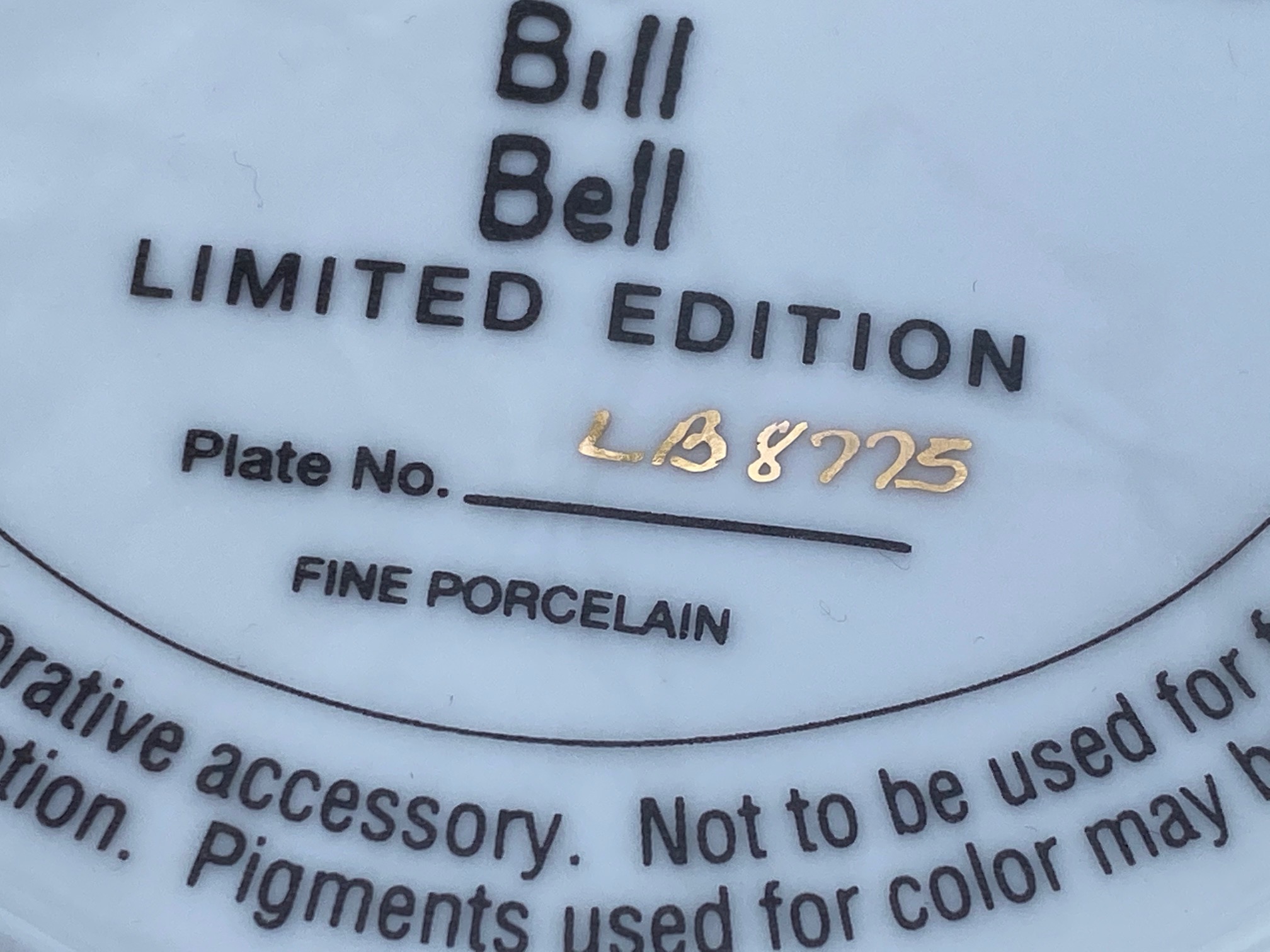Franklin Mint Heirloom Collection dish warns “Not to be used for food consumption. Pigments used for color may be toxic.”
Posted: Friday, March 20, 2020
Introduction: Tamara Rubin is an independent advocate for consumer goods safety, and she is also a mother of Lead-poisoned children. She began testing consumer goods for toxicants in 2009 and was the parent-advocate responsible for finding Lead in the popular fidget spinner toys in 2017. She uses high-precision XRF testing (a scientific method used by the Consumer Product Safety Commission) to test consumer goods for metallic contaminants – including Lead, Cadmium, Mercury and Arsenic.
1993 Franklin Mint Heirloom Collection “Purrfect Feast” collectable dish.
The full XRF test results of the small plate pictured are below (so please scroll down)… and when they say “may be toxic they mean it! This puppy tested positive for high levels of Lead, Cadmium and Arsenic! These are the highest levels detected for this dish:
- Lead (Pb): 23,200 +/- 900 ppm
- Cadmium (Cd): 1,245 +/- 67 ppm
- Arsenic (As): 2,468 +/- 257 ppm
Frankly, what I don’t understand is WHY the Franklin Mint knows this and labels this dish properly but no other manufacture seems to connect the dots on this issue! Here are links to some additional reading that may be of interest, based on your interest in the test results of this item:
- Click here to see more vintage dishes I have tested.
- Click here to see more dishes with Lead that I have tested.
- Click here to read more about the concern for Lead in pottery and dishware.
Stay Safe Out There!
A quick note from Tamara
Hey readers – I hope you are staying well out there with all that is going on in the world right now. I’m hanging out mostly at home with my children – and have been doing so for about 10 days now. I pulled them out of school over a week ago – just to be safe. Each of my three youngest sons have compromised immune systems (which manifests in different ways for each of them), due to having been Lead-poisoned as babies.
In between kid-wrangling I am working hard to publish literally HUNDREDS of new posts (with test results for various consumer goods I have tested over the past couple of years, but have not yet had a moment to report on!). These posts have created a backlog in my system for more than a year now – and it’s actually nice to have a *break* with some time to catch up! To make this happen as quickly as possible, I am (as with this post) simply posting the images and the test results – without a lot of additional information. [Do not worry — I will continue to update them with more information as I get caught up and begin to have the time!]
For those new to my website, please check out the menu in the header of the website for more information about how I test things (and my background, etc.) On each post you can also click on any of the keyword tabs at the top of the post to find more items in that category. Here’s the post discussing the type of testing I do, and the specific instrument I use to detect, analyze and confirm metals content, and ultimately produce the resultant data for each item reported here – link.
Please Note: Test results reported below are science-based, accurate, and replicable. Test results reported here are from tests that were done for a minimum of 60 seconds each, and repeated multiple times, to confirm the results. As with all the testing reported here on my blog, a freshly-calibrated high-precision XRF instrument testing in Consumer Goods mode was used to test the item pictured here.
As always, please let me know if you have any questions.
Thank you for reading and for sharing my posts!
Tamara Rubin
#LeadSafeMama
Test results for the Franklin Mint collectable plate pictured on this post:
Yellow area of food surface of plate:
- Lead (Pb): 23,200 +/- 900 ppm
- Arsenic (As): 2,468 +/- 257 ppm
- Barium (Ba): 1,385 +/- 391 ppm
- Antimony (Sb): 786 +/- 100 ppm
- Zinc (Zn): 1,051 +/- 80 ppm
- Iron (Fe): 936 +/- 140 ppm
- Chlorine (Cl): 15,300 +/- 1,500 ppm
Orange area of food surface of plate:
- Lead (Pb): 14,800 +/- 500 ppm
- Cadmium (Cd): 1,245 +/- 67 ppm
- Arsenic (As): 1,785 +/- 180 ppm
- Barium (Ba): 1,701 +/- 347 ppm
- Chromium (Cr): 917 +/- 59 ppm
- Selenium (Se): 232 +/- 30 ppm
- Zinc (Zn): 272 +/- 45 ppm
- Nickel (Ni): 133 +/- 39 ppm
- Iron (Fe): 1.131 +/- 134 ppm
- Titanium (Ti): 200 +/- 81 ppm
- Chlorine (Cl): 14,100 +/- 1,400 ppm
Gray/Blue area of food surface of plate:
- Lead (Pb): 17,300 +/- 800 ppm
- Cadmium (Cd): 141 +/- 58 ppm
- Arsenic (As): 1,578 +/- 271 ppm
- Barium (Ba): 1,165 +/- 481 ppm
- Chromium (Cr): 897 +/- 63 ppm
- Tin (Sn): 131 +/- 74 ppm
- Zinc (Zn): 1,488 +/- 117 ppm
- Nickel (Ni): 193 +/- 58 ppm
- Iron (Fe): 598 +/- 149 ppm
- Chlorine (Cl): 12,800 +/- 1,400 ppm
~ End of Post ~
Scroll down for additional photos of this item.




Never Miss an Important Article Again!
Join our Email List









Thank you for all you have and do for this cause.
In your investigations, have you discovered any safe coating that can be sprayed or painted onto ‘not for food’ plates? I haven’t found one yet, but it would make some inventive manufacturer a bazillion dollars!
Best regards,
Jackie Bragdon
That does sound like a good invention! However really any coating can wear off – so I think it is always just worth sticking with Lead-free dishes in the first place! Thanks for commenting!
– Tamara
Thanks for the speedy response, Tamara! I agree with your recommend…however, maybe I’ll reach out to the Air Force Space Command and find out what they spray on our spacecrafts! LOL!! Who knows what I’ll find out. Whatever it is, I’ll share it with you :-).